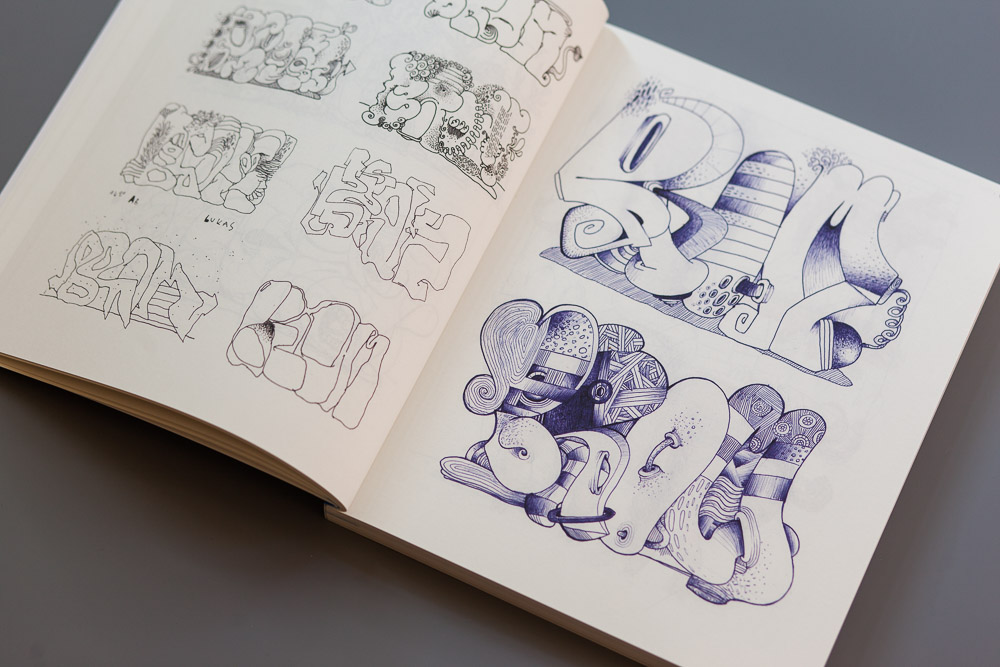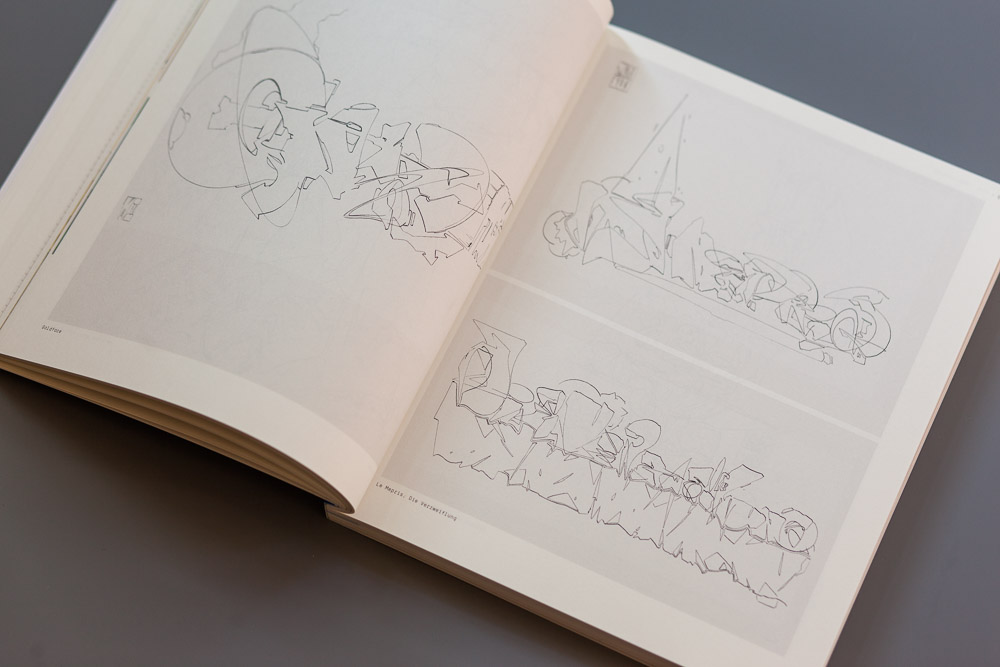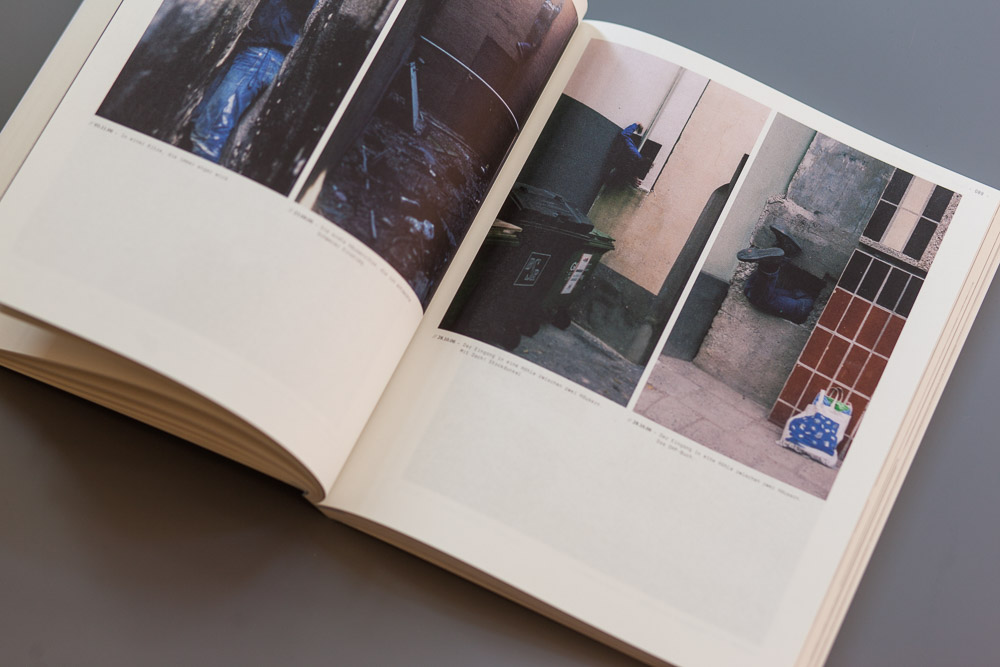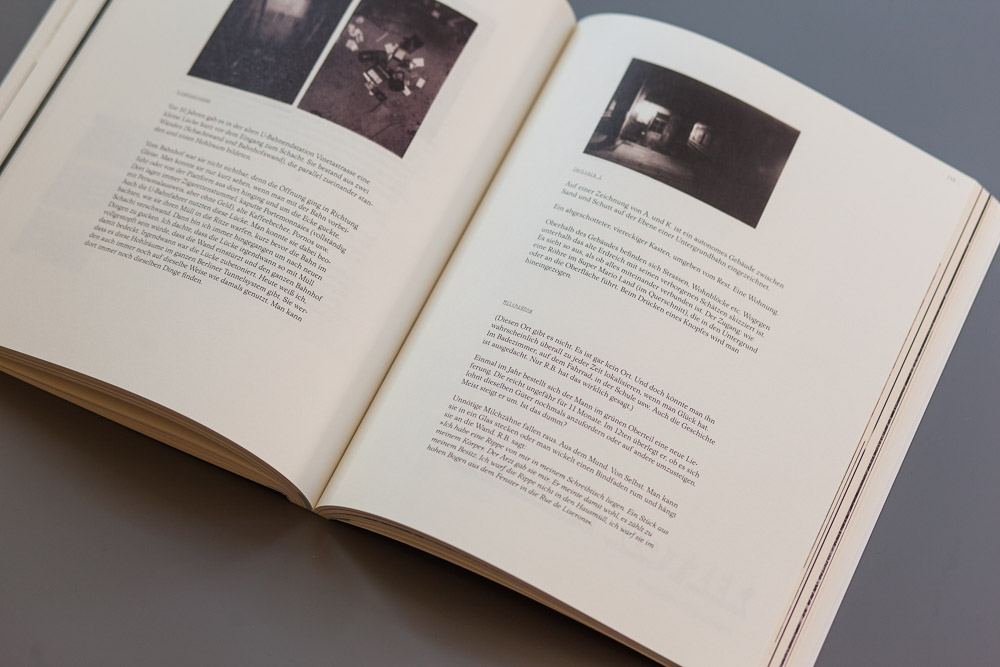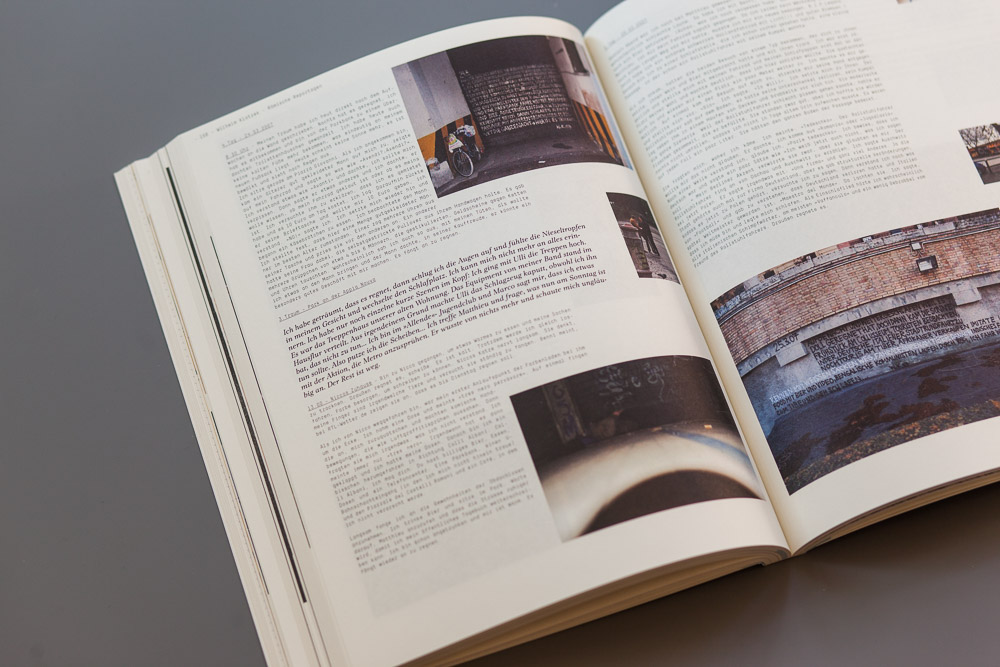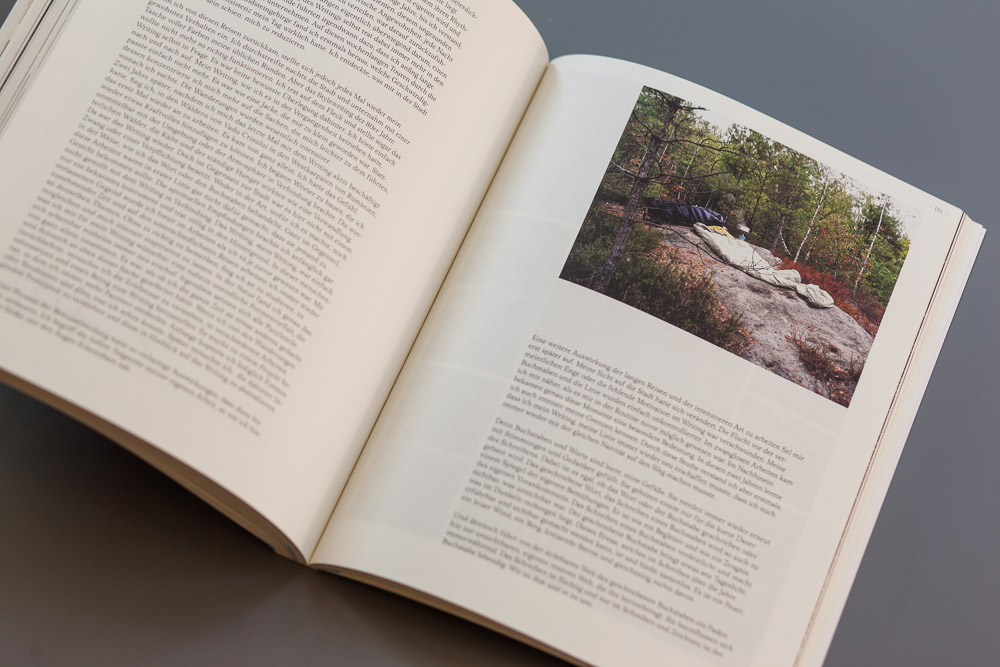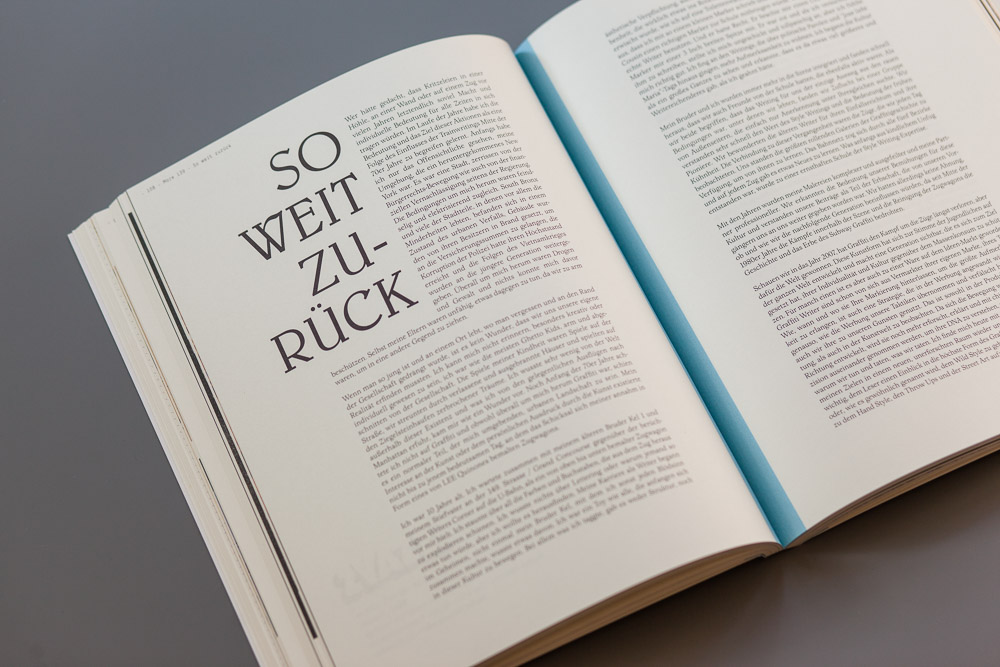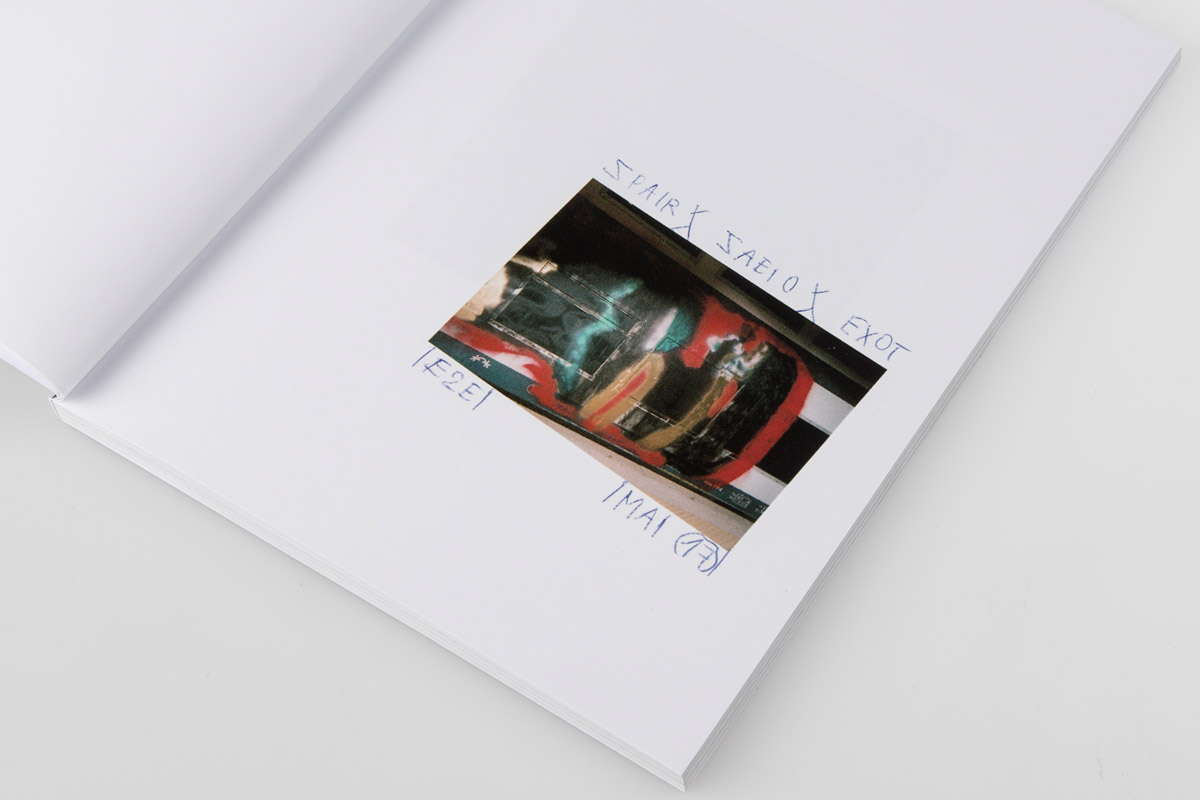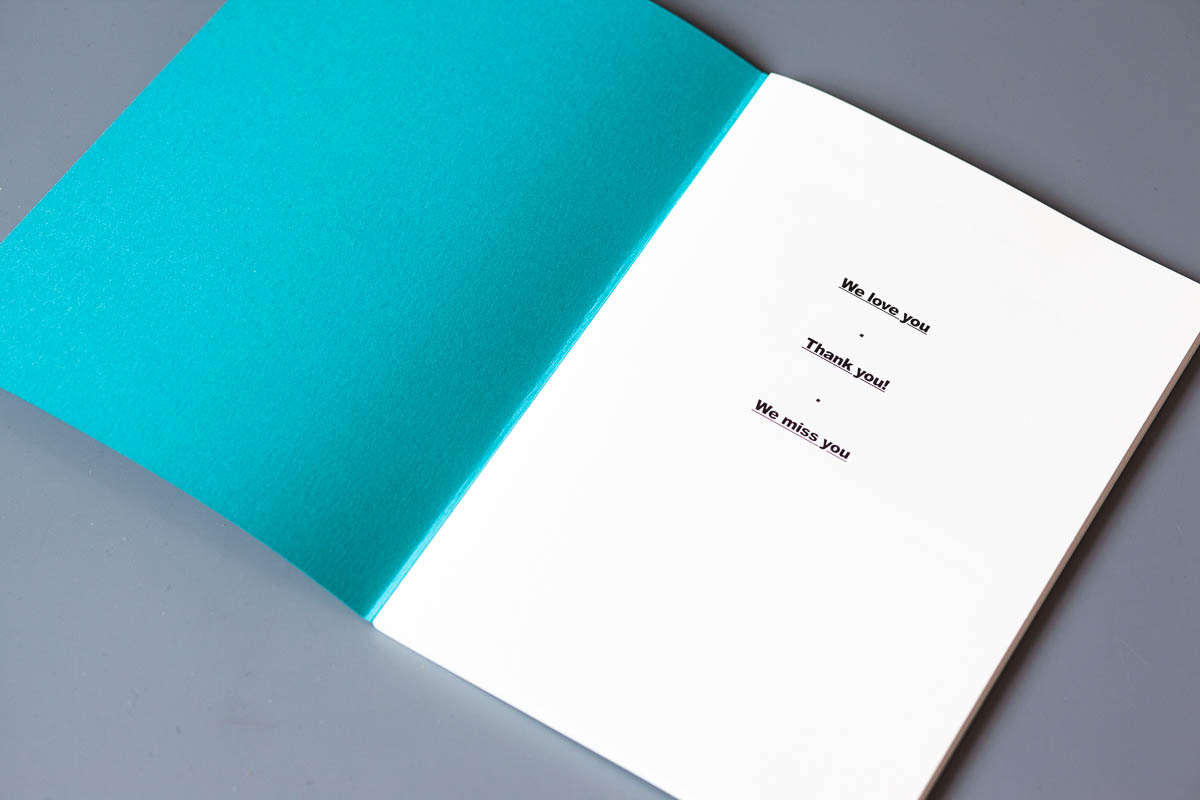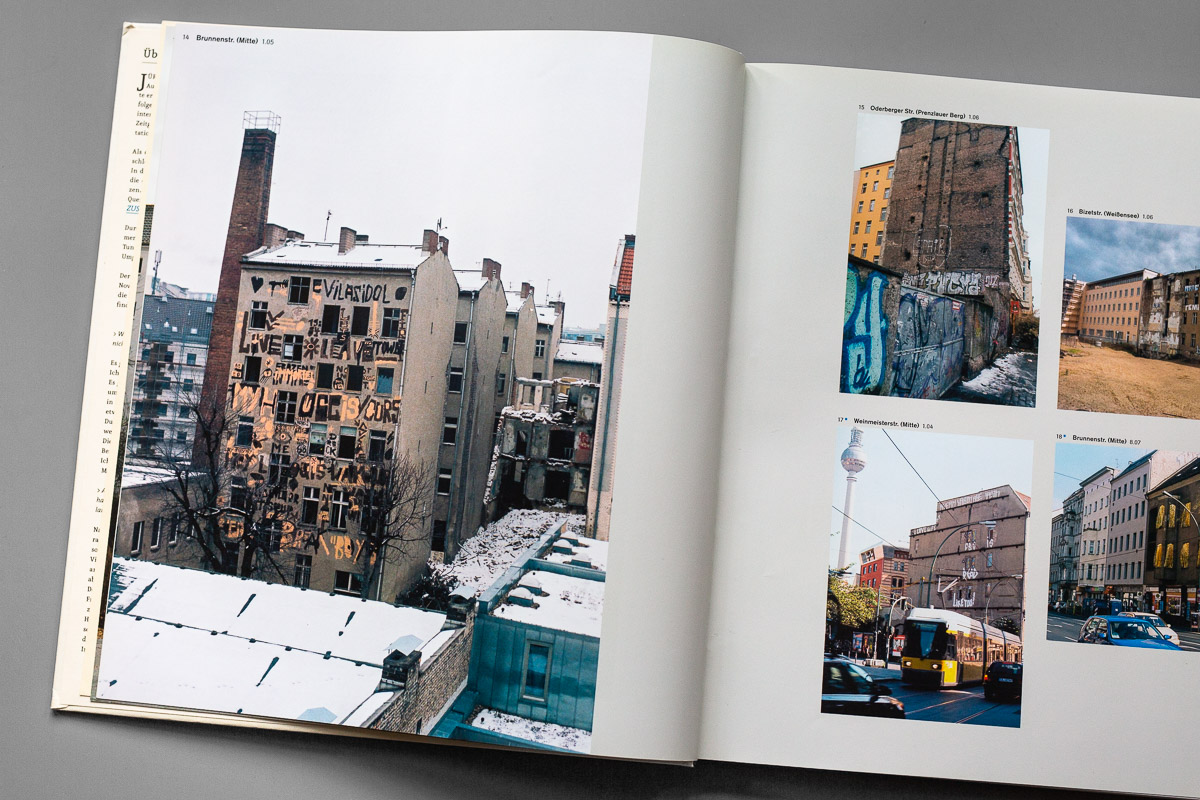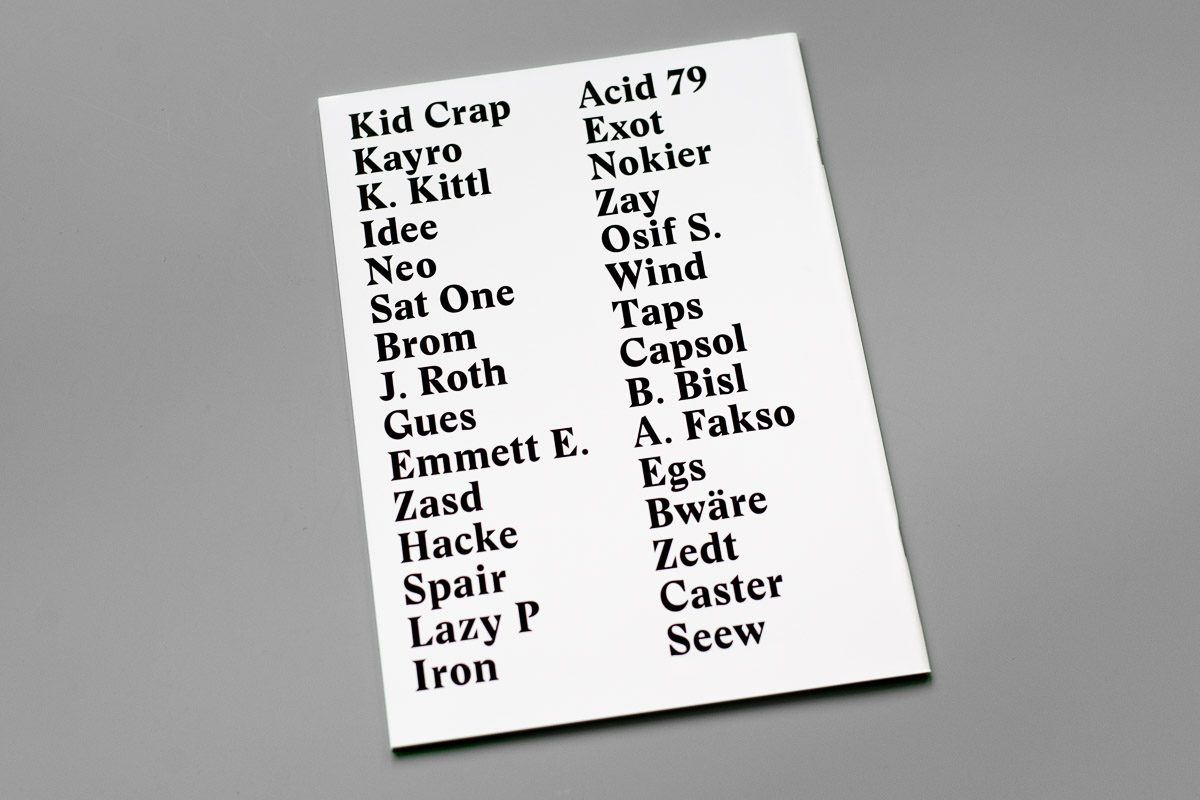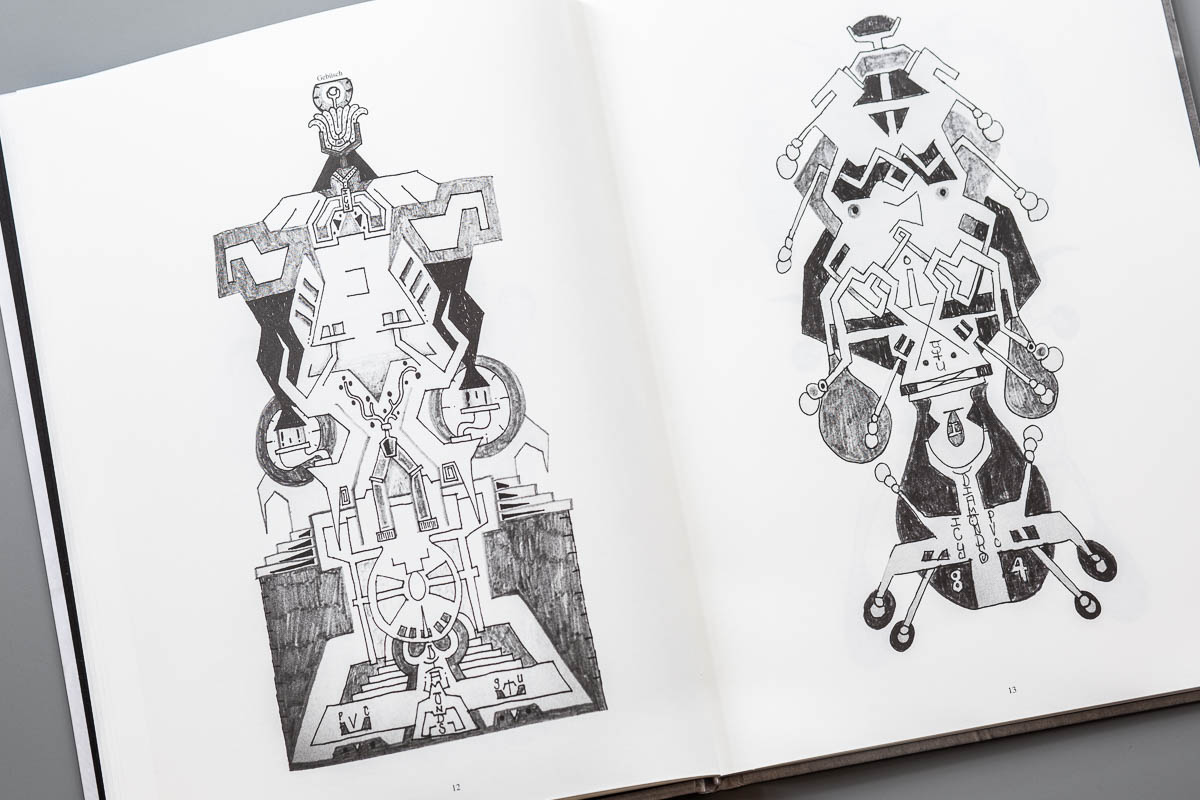Das Gedächtnis der Stadt schreiben
34,90 €
“I roamed the streets by night, making my usual rounds with a bag full of paints. But the style-writing of the 80s didn’t work for me quite so well any more. […] My writing, at least the kind I used to do, just didn’t fit any more. It was like a jacket that had become too small for me.“
– BUS126
In 2007 Markus Mai and Thomas Wiczak invited 18 other artists with a background in graffitiwriting to join their concept book “Das Gedächtnis der Stadt schreiben” / ”Writing the Memory of the City”. Every participant presents own, individual ways of letting their past of writing graffiti (for often more than 20 or even 25 years) influence their works nowadays.
The full list of featured artists reads like a who-is-who of avant-garde stylewriting even today, years after it’s release. The importance the book had and still has, not only in the Berlin graffiti scene, lead us to the idea of interviewing it’s authors.
In 2007 “Writing the Memory of the City” was released. Has there been a specific event or incident which did spark the idea of the book?
Markus Mai: Thomas and me have been working together at Jazzstylecorner before. We both had the idea to capture the vibe and the new ways of writing different people were exploring at the same time. It reached its climax at the “City of Names”-project during the 2005 Backjumps exhibition. You could really feel that there was something special happening. The book contains a lot of the spirit of that time.
Most of the featured artists are still active today. Looking back, having in mind their development since 2007, would you still choose the same artists or are there even others which attracted your attention in the last decade?
Thomas Wiczak:
The situation today is different. All of us kept on working and made progression so of course the book would look different, publishing it today. The reflection and questioning of your own work and relationship to writing does not stop at a certain point. It’s a constant process of change and evolution, although the way is uncomfortable and not many are willing to take it. If the reader in the end does agree, if a book like this is really necessary, was not the first aim of this project.
Looking on the situation of today, I’m not quite sure what writing “needs” at the moment. Perhaps something like “The Death of Graffiti”, which has been published in 2017. Maybe this book is the real continuation of our “Writing the Memory of the City”, especially concerning the zeitgeist of these days.
Markus Mai:
The books topic allows to spread the focus of non-conform-writing. And that was really one of the main-ideas behind it. We had many discussions together with all the artists featured on which other writers should be included and which should be left out. But of course, in the last ten years there have been plenty of artists realizing interesting projects and a lot of them would perfectly fit in our concept. But also the books alignment would be a bit different today.
As unique as the artists movement away from traditional writing is, as diverse are their ways of presenting new forms of expression, always connected to their roots. The reader does not only get the chance to follow them through photographic documentation of their works (AKIM, Konrad Mühe, etc.), but also is invited to join their often emotional and reflective thoughts and ideas on their creations (Wilhelm Klotzek, TRY ONE, etc.).
In addition to texts and photographs “Writing the Memory of the City” also consists of paperworks. The sketches of writers like NICK, BROM and Christian Schellenberger are shown as equal artworks. Often texts, photographs and sketches are even connected as for example in BUS126s chapter. He explains how the often floral structures and organic outlines he uses, became part of his artworks after a process of letter-building in wild nature.
The book unites some of the most interesting artists of the mid 2000s. Although Berlin is not mentioned as main-city, the book focuses on writers from the German capital. As Mare139 describes in one of the five essays you can also find in this publication, the similar social circumstances of New York in the 1970s and Berlin in the 1980s, might hint a clue to that fact. “Writing the Memory of the City” is an often overlooked classic but a must-have for everybody who wants to look over the edge of the plate when it comes to stylewriting.
Featured artists are Daniel Tagno (✝), BROM, TRY ONE, NICK, Christian Schellenberger, Thomas Wiczak, SPAIR, Matthias Wermke, MARE139, SKKI, Peter Osten, Stefan Micheel, Meira Ahmemulic, Donwood Bricks, Wilhlem Klotzek, AKIM ONE, P. Vector Codierer, BUS126, Konrad Mühe and Thomas Bratzke.
232 pages, 19,8 x 24,5 cm, Softcover
Language: German (the English version is sold out)
Release date: 2007
Publisher: Dokument Press
Out of stock
Related products
-
451 – 452
18,00 € -
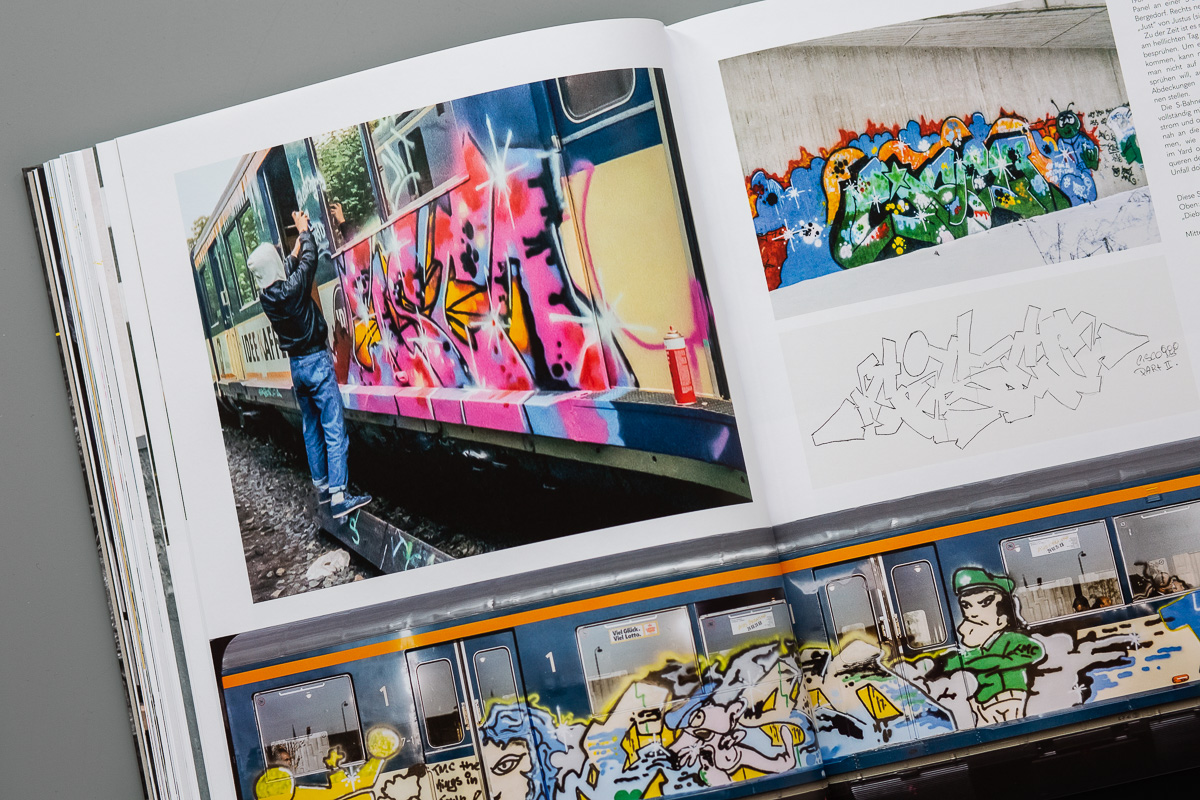 Select options This product has multiple variants. The options may be chosen on the product page Quick View
Select options This product has multiple variants. The options may be chosen on the product page Quick ViewEINE STADT WIRD BUNT. Hamburg Graffiti History 1980-1999
60,00 € – 69,90 € -
 Select options This product has multiple variants. The options may be chosen on the product page Quick View
Select options This product has multiple variants. The options may be chosen on the product page Quick ViewOH – by Boris “DELTA” Tellegen
30,00 €
You may also like…
-
Sale!
Jürgen Große – Urban Art Photography
49,90 €Original price was: 49,90 €.25,00 €Current price is: 25,00 €. -
PLAY2HARD – SPAIR
32,00 € -
Sale!
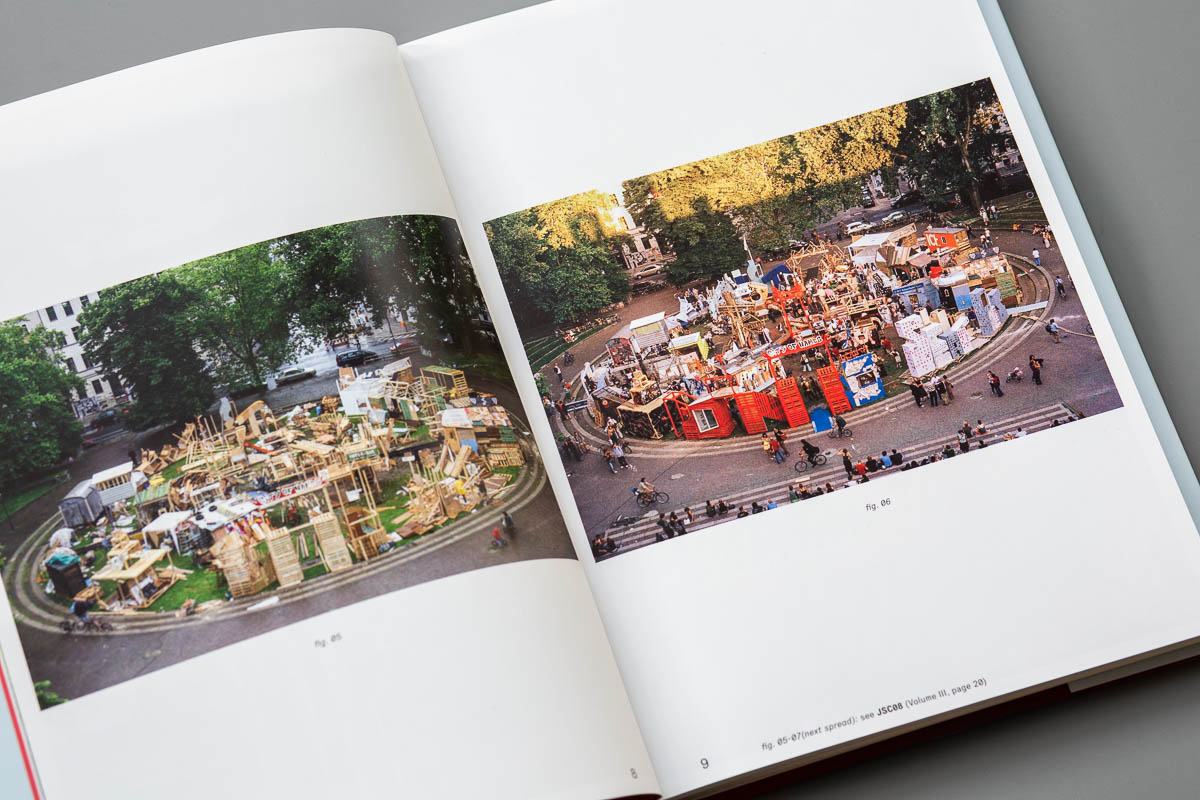 Select options This product has multiple variants. The options may be chosen on the product page Quick View
Select options This product has multiple variants. The options may be chosen on the product page Quick ViewKnowing ZASD By His Walk
10,00 € – 18,00 €



